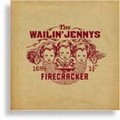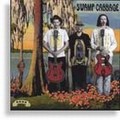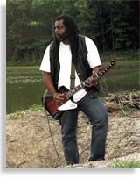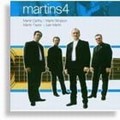
Music Technology’s Talos Basic is an all-tube guitar amp is designed to be simple, yet so versatile that it stands out in what has become a rather large crowd.
The amp is based on a keep-it-simple philosophy that favors using a short signal path, like vintage amps, but with audiophile-grade components and an improved design that reveals the guitar’s true sound and allows the player to use the guitar as a tool to get good tone.
The Basic has just a handful of top-mounted controls including Gain, Drive, a Fat/Bright switch, and three-position wattage selector. Also onboard are high and low inputs, an insert jack, on/off switch, and a fan switch which is included only to allow the user to turn the fan off while recording. The back panel also has an extension speaker jack.
The Basic is obviously built for durability, with hand-built fiberglass circuitboards and an aluminum chassis. It uses a 12AX7 and 12AT7 in the preamp, and two 6L6 or 6550 tubes in the power section. The output transformer was designed specifically for the amp. Cabinet options include 13-ply birch or solid pine, and several finish options are available. Speaker choices are Jensen 12″ neodymium or C12N.
The Gain and Drive controls use a push/pull circuit where pulling adds gain, punch, and volume. The three-position power switch switches the amp from triode mode (20 watts output) to partial triode mode (30 watts) to pentode mode (40 watts). Each affects tone.
To test the Basic, we used our ’70s Fender Strat with stock pickups, an Ibanez Artist with Wolftone Greywolf pickups and a stock Japanese Fender reissue Telecaster. Using the Strat, we tried Talos’ suggested settings, starting with the guitar’s volume at 5, the amp’s Gain and Drive controls 3 o’clock, the Bright switch flipped on, and output power at 20 watts. The tone was very sparkly and clean, with great response and note separation. We then turned on the Fat switch and, as expected, got more low-end, but still with nice sparkle. Immediately noticeable is that the Basic does not favor any particular frequency – it has nice balance throughout. As we increased the guitar’s volume, we got more gain, with a touch of volume boost. The amp retained its clarity all the way to the top, offering great Strat tone in all positions at a lower volume.
We then pulled up the Gain and Drive switches and got even more gain, volume, and body without changing the tone. Treble got a little harsh, but we rolled off the guitar’s tone, and it stayed manageable. We tried the other power positions, and they delivered the expected volume along with more punch and bell-like sparkle. The amp was always there with all the gain we’d need, even with the Strat.
In the 40-watt position, we backed down the Gain and Drive to between 10 and 11 o’clock to reveal a truly gorgeous clean tone, no matter which pickups we used. It was warm and fat, with incredible sweetness and sparkle – pure, true Strat tone. The Basic’s push/pull Drive and Gain controls help it deliver a plethora of tonal options.
With then put the humbucker-equipped Ibanez through the same paces and got a fat, full blues tone with slight breakup and near-perfect sparkle. Switching from Bright to Fat produced a dark, almost jazzy tone. Bumping up the guitar’s volume control unleashed gobs of gain with great lead tone.
As we switched the amp to higher-output settings, the amp showed us it can indeed get loud. In the highest settings, you’ll be active with the guitar’s controls, but you’ll be “amply” rewarded with a variety of gain levels and natural amp tone.
The Basic also didn’t back down when we whipped out the Telecaster – recognizable Tele tones are right there. Again, in the highest of output settings, you’ll want to roll off the tone knob. For our money, the 30-watt setting with the Fat switch engaged produced the most overall satisfying Tele tone.
We were very impressed with the number of gain structures and natural tones the two-knob Basic is capable of producing. The amp lets every guitar sound like itself and lets the player control his sound. From sparkly clean to near-metal and all points in-between, the Basic delivers.
Features: All tube circuit, push/pull gain and drive controls, high/low inputs, variable-output design, Jensen Neo or Jensen C12N speakers, 13-ply birch or pine cabinet with finish options.
Price: $2,950.
Contact: Talos Instruments, 5418 Port Royal Road, Springfield, VA 22151; phone (703) 764-7005; www.musictechnology.com
This article originally appeared in VG‘s Jul. ’05 issue. All copyrights are by the author and Vintage Guitar magazine. Unauthorized replication or use is strictly prohibited.





